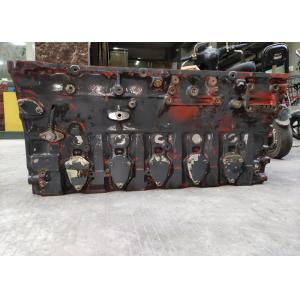2nd Hand Steel Engine Blocks , 12 Valve Block EP100 For EX300-1 Excavator
Add to Cart
EP100 Diesel Used Engine Blocks For Excavator EX300 - 1 Water Cooling
Specification
| Car name: Engine cylinder block |
| Model Number: EP100 |
| Engine type: Diesel |
| Application: Excavator |
| valve: 12 valve |
| The number of cylinder: 6 |
| Injection: Direct |
| Work form: Turbo |
Description
Squeeze casting
In contrast to the HPDC process, mould filling in squeeze casting
is done rather slowly and in a vertical movement. The die is
therefore filled without significant gas inclusions and the
components can normally be fully heat treated and welded.
Satisfactory die filling and avoidance of oxide inclusions can be
ensured by proper process control. But the minimum wall thickness
should be slightly higher than in the HPDC process.
In practice, the squeeze casting method is mainly used for the
infiltration of performs, e.g. for the local integration of
aluminium matrix composites as cylinder liners into engine blocks.
Gravity die casting (GDC)
The permanent mold casting process makes use of a permanent steel
die into which the aluminium melt is poured under the influence of
gravity. Compared to the HPDC process, the complexity of the cast
component can be increased by the use of sand cores to form
undercuts and complex interior shapes in the casting. The use of
water cooling and feeders leads to a directional solidification and
hence sound castings with a low amount of defects can be achieved.
Filling can be further improved using low pressure filling or the
Rotacast® process.
Due to the rapid process of solidification, permanent mold castings
have a dense, finegrained structure with good strength
characteristics. Together with the possibility of a T5 or T6 heat
treatment, the resulting mechanical properties are significantly
higher than those which can be achieved with the HPDC process.
There are two variants of the permanent mold casting process, the
tilting permanent mold process and the low-pressure process. In the
tilting process, the die is tilted towards the side of the pouring
opening, and then slowly moved back into the upright position as
pouring progresses. In the low-pressure process, the melt is
subjected to pneumatic pressure in the casting furnace and enters
the die against the force of gravity through a rise pipe.



